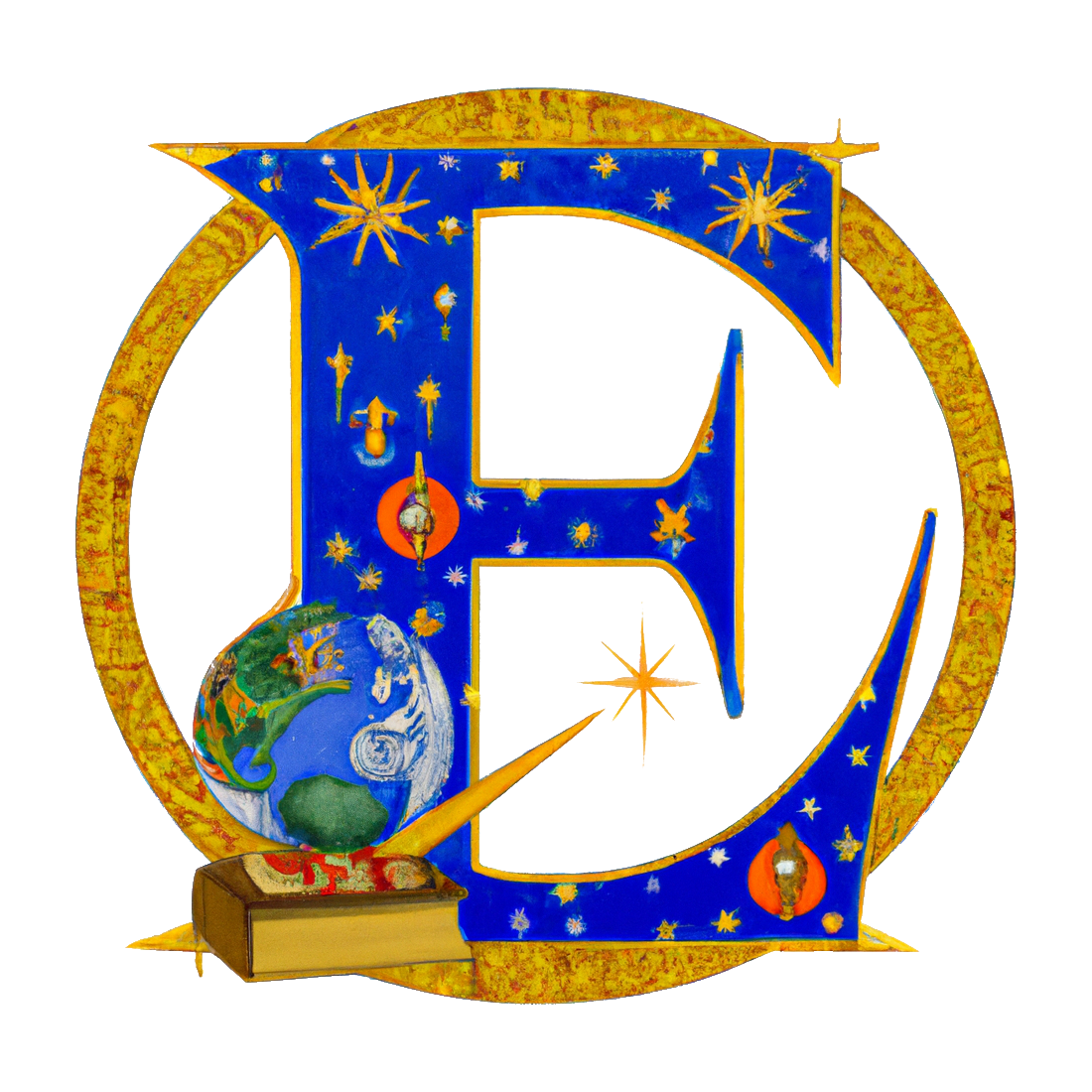Ghent-Bruges leaf sold at auction is the missing opening with donor portrait from the Lanna Evangelary-Epistolary by an artist close to Loyset Liedet
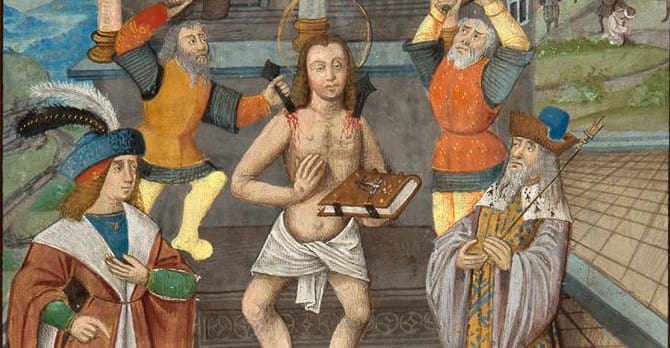
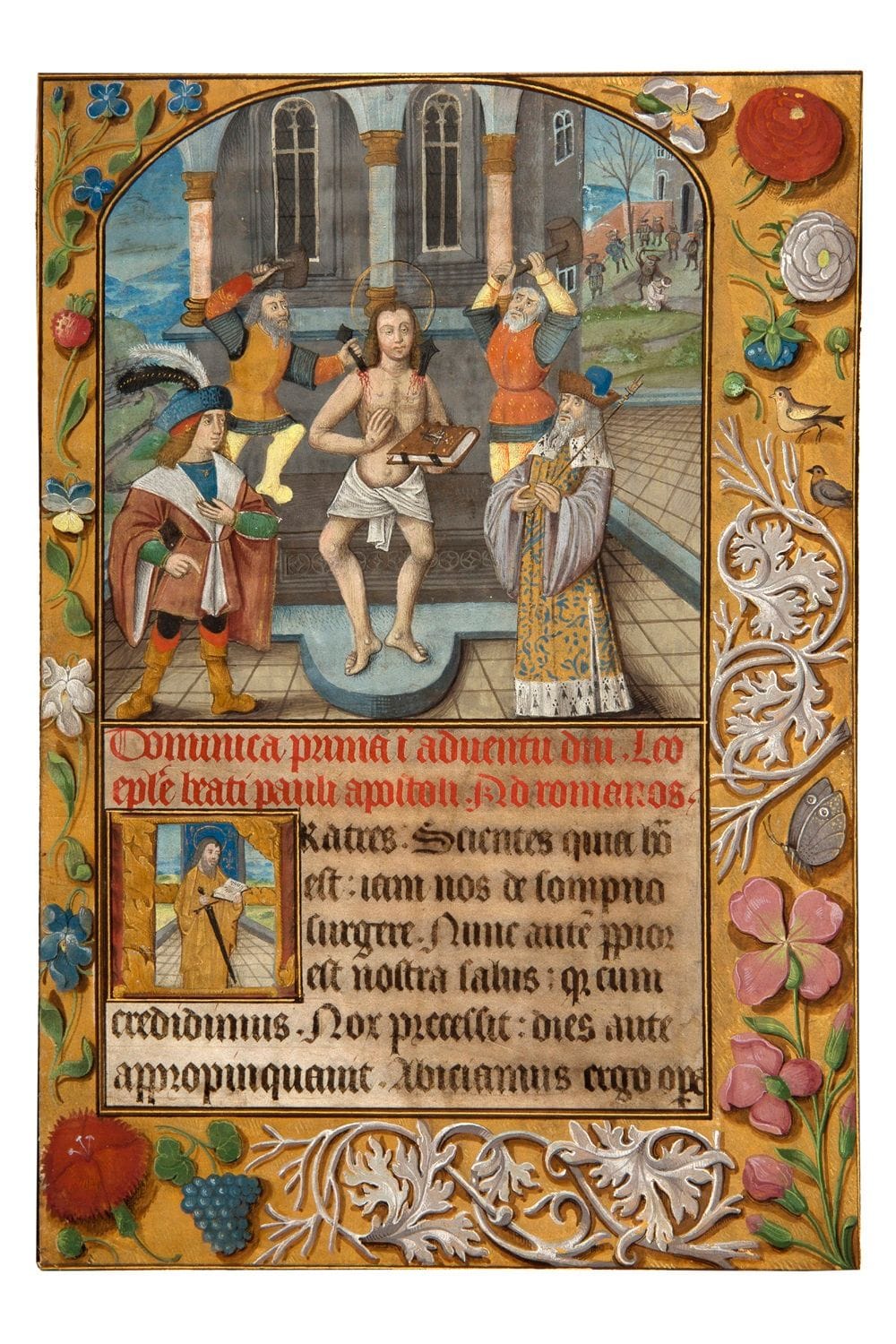
Yesterday the leaf above was sold at auction as an anonymous Ghent-Bruges illuminated leaf by a follower of the Master of the Prayerbook of around 1500, circa 1490-1510. In fact this leaf predates the Master of the Prayerbook of around 1500 and is the missing opening page of the Lanna Evangelary-Epistolary, a dismembered and mostly lost manuscript with two known complete sister leaves, one in the Robert Lehman Collection in the Met Museum and one in the Wildenstein Collection at the Musée Marmottan Monet. All three known leaves were sold together in Prague in 1911 at the sale of the collection of Adalbert von Lanna, and the Martyrdom of Saint Quentin has not been seen in over 100 years since then. As far as we know in this is the only miniature in private hands by this artist.
The Robert Lehman Collection. Vol. 4, Illuminations by Sandra Hindman and others features an essay on the leaf depicting Christ's Entry into Jerusalem.
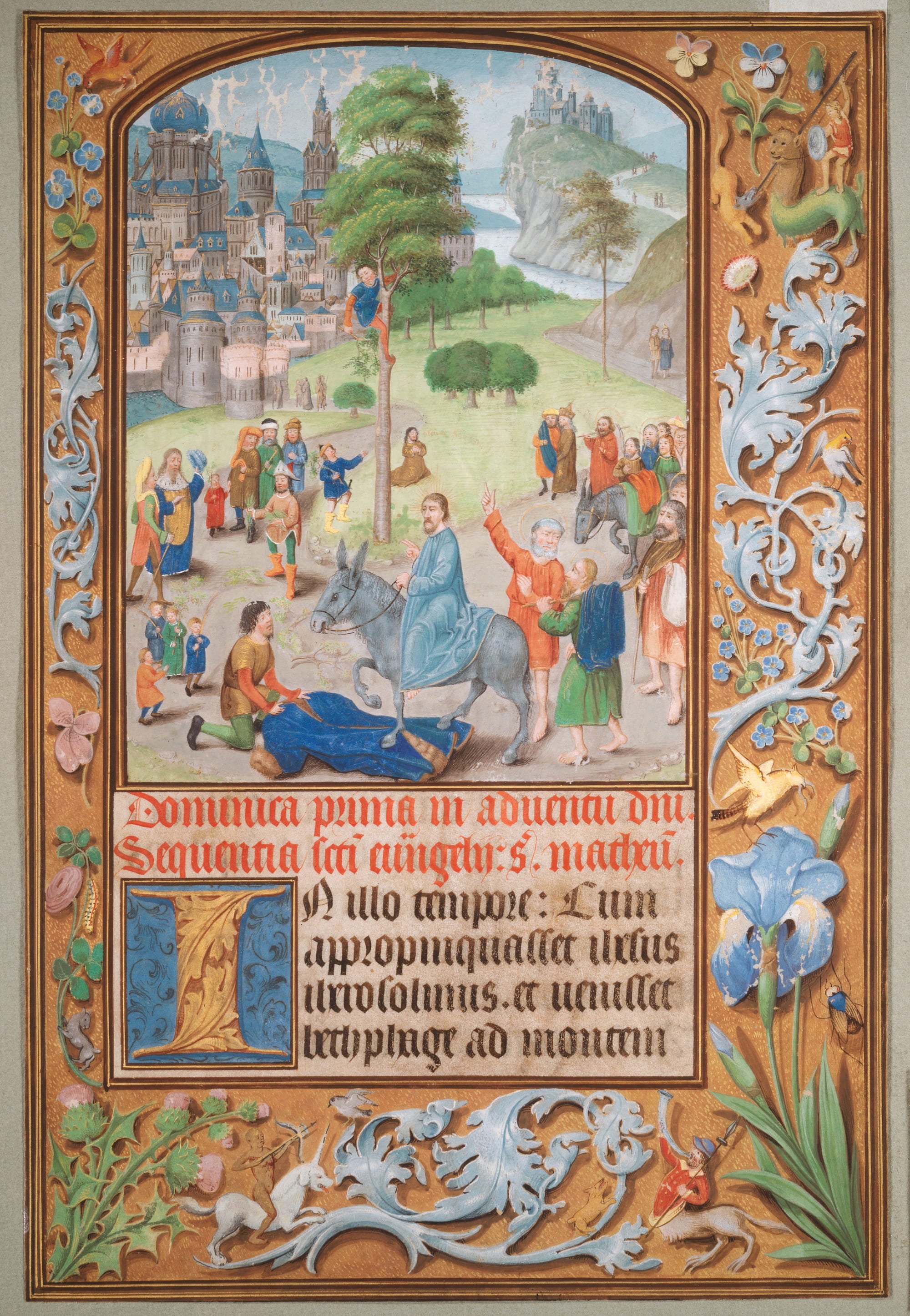
Hindman et al. date the leaves to circa 1480-1490. Though I can see how on first glance, particularly the sort of flat style of the borders could give the impression of a later dating. These leaves were painted by a talented artist in Bruges who doubtless had contact with Loyset Liedet, and who worked during the very early Ghent-Bruges period. This is evidenced concretely as the Wildenstein leaf has borders in the older sprayed acanthus leaf style.

One of the unique properties of the manuscript is that rather than a typical Book of Hours, it was an Evangelary and Epistolary, perhaps originally in two volumes. An Evangelary is a (partial) book of Gospels containing only those portions of the four gospels which are read during Mass or in other public offices of the Church. An Epistolary is a book that contains readings from the Epistles arranged according to the liturgical calendar. This accounts for the unusual iconography.
According to Hindman et al., the Martyrdom of Saint Quentin was most likely the opening leaf of the manuscript.
The leaf with the Martyrdom o f Saint Quentin was most likely the opening page of the book (or two-volume set). Its historiated initial F (for "Fratres" ), in which the apostle Paul stands holding a sword in his right hand as he preaches from the book he holds in his left, is more elaborate than those on the other two leaves and would have been suitable for a more important section of the book.
The iconography of the miniature also lends to this idea, as the saint is holding/presenting the book in the miniature, alongside a flamboyantly dressed donor to the left with feathered-cap and high boots.
The subject of the lost miniature is unusual. According to the Golden Legend, Quentin, a Roman of noble birth, traveled to Gaul in the fourth century and worked numerous miracles in the city of Amiens, on the river Somme in northern France. By order of the prefect Maximilian he was arrested and withstood many tortures before being brought to Vermandois, east of Amiens. There the judge ordered that red-hot nails be driven through his body from his head to his legs and pegs be driven under his fingernails before he was beheaded. In the miniature, Quentin's tormentors raise their heavy hammers, ready to drive large nails through his shoulders, as the prefect looks on at the right. A vignette in the background at the right shows the saint being beaten. Saint Quentin appears to be presenting the book he holds in his left hand, which is a departure from the usual iconography. The elegantly clothed man at the left is undoubtedly the donor.
The artist of this manuscript has a distinctive style and can be identified with the same hand in manuscripts in public collections in Connecticut, Turin and Budapest.
Since the essay by Hindman et al., two border cuttings missing their miniatures from the same manuscript have come to light and were sold together in 2021 for 6,000 GBP. This goes to show that the original manuscript was probably lavishly illuminated.
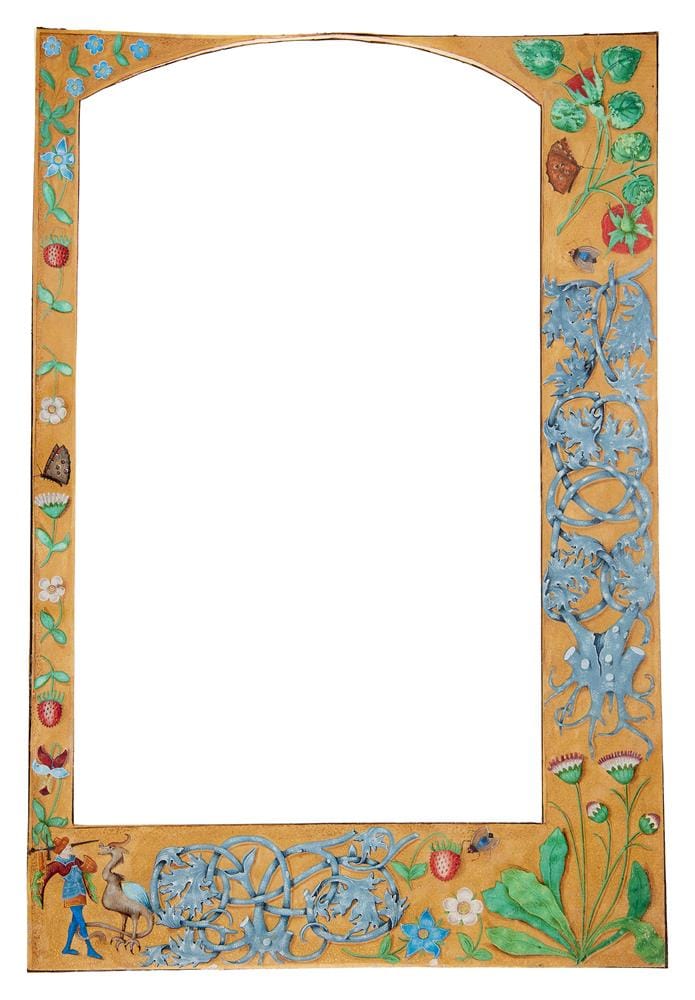
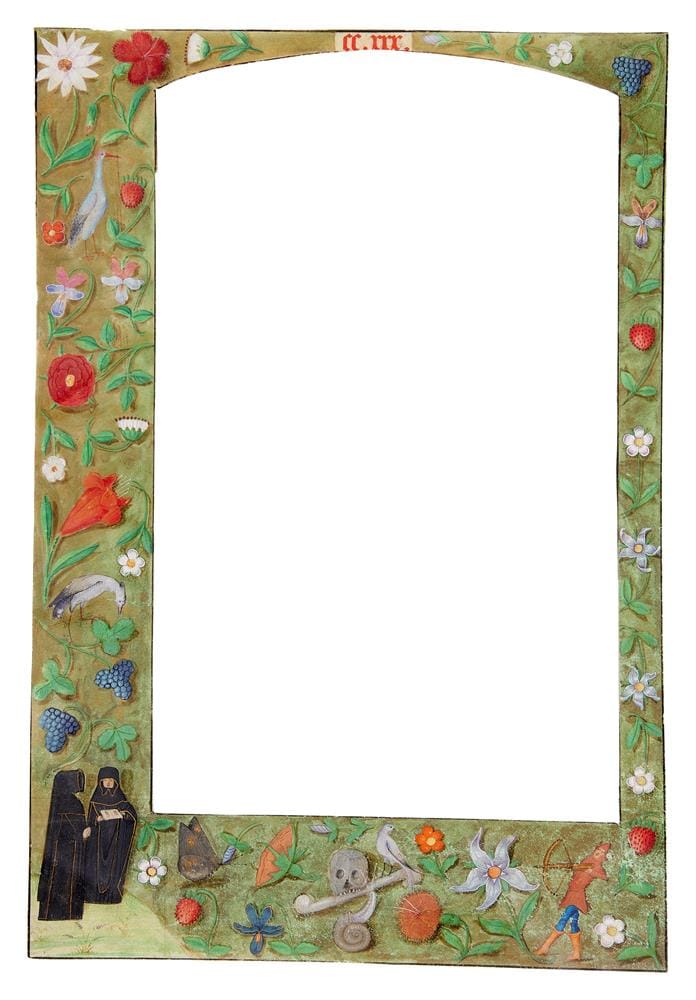
Bloomsbury Auctions, lot 91, July 6 2021, The Roger Martin Collection of Western Manuscripts and Miniatures and other properties
I'm hopeful that more borders or miniatures could come to light that could help shed light on the patron of the manuscript and it's original location of use.
